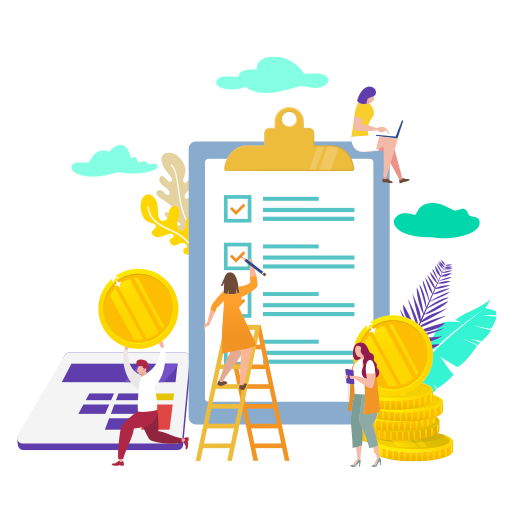
- Home
- Global Payroll
- 6 Key Steps for a Seamless Legacy Payroll Migration
6 Key Steps for a Seamless Legacy Payroll Migration
Published :

Are you struggling with outdated legacy payroll systems and seeking a risk-free transition to a new payroll solution? Legacy payroll migration can be complex, but with the right approach, you can ensure a smooth, compliant, and efficient transition.
Here are six critical factors to consider for a seamless migration from legacy to modern payroll systems.

The first step in legacy payroll migration is to analyze the challenges with your current legacy system. These issues may include compliance risks, payroll calculation errors, integration failures, or inefficiencies in service delivery. Many organizations experience setbacks when their legacy payroll vendor is acquired by another company, leading to changes in product deployment strategy and unexpected delays or cancellations of planned enhancements.
Additionally, outdated systems often struggle to keep up with evolving payroll regulations, automation needs, and reporting requirements. Some organizations may rely on manual interventions due to system limitations, which can increase the risk of errors, delays, and non-compliance penalties. Understanding and acknowledging these challenges is crucial before moving forward with a migration strategy.
Once the pain points are identified, the next step is choosing the most suitable payroll system. Key considerations include:
Choosing a well-established payroll system with a proven track record in compliance and customer support is crucial for successful legacy payroll migration, ensuring long-term success and minimizing potential risks.
A successful migration requires the right team with expertise in both the legacy and new payroll systems. This includes:
Additionally, a well-defined project plan for legacy payroll migration should include a clear escalation matrix, leadership involvement, and timelines for key milestones. Defining roles and responsibilities early in the process helps avoid delays and ensures accountability.
Mapping the current payroll processes and system configurations to the new system is crucial. The transition may require modifications in workflows or automation processes. Consider the following:
Data accuracy and process standardization are key to a seamless transition, reducing the risk of payroll discrepancies and ensuring regulatory compliance.
Before fully switching to the new payroll system, rigorous testing and parallel runs are essential. This ensures:
A well-executed testing phase during legacy payroll migration provides confidence in the new system’s reliability and helps prevent potential payroll disruptions.
Once the system goes live, ongoing support is vital to ensure continued success. Best practices include:
Proactive monitoring and continuous improvement ensure that the payroll system operates efficiently and meets organizational objectives.
Migrating to a new payroll system doesn’t have to be time-consuming or costly. What if you had access to a pre-configured payroll solution tailored to your business needs and seamlessly integrated with your legacy payroll system?
At Ramco, we have developed a pre-configured payroll system for Australian businesses, enabling faster implementation, enhanced service delivery, and 100% compliance. Our solution simplifies migration, reduces transition time, and ensures compliance with Australian payroll regulations.
By considering these six key factors, your organization can achieve a smooth, error-free, and risk-free transition to a modern payroll system. Ready to make the switch? Contact us today to explore how our innovative payroll solutions can streamline your payroll operations.
Enterprise asset management (EAM) involves the management of mission critical assets of an organization throughout each asset's lifecycle. EAM is used to plan, optimize, execute, and track the needed maintenance activities with the associated priorities, skills, materials, tools, and information. The aim is to optimize the quality and utilization of assets throughout their lifecycle, increase productive uptime and reduce operational costs.
Enterprise asset management (EAM) involves the management of the maintenance of physical assets of an organization throughout each asset's lifecycle. EAM is used to plan, optimize, execute, and track the needed maintenance activities with the associated priorities, skills, materials, tools, and information.
The software helps in effective maintenance of assets through preventive, predictive, shutdown and breakdown maintenance strategies. The system also helps enterprises mitigate equipment risks by enhanced safety standards. The streamlined operations and improved asset performance helps organizations increase their investment effectiveness.
EAM is important because it helps organizations track, assess, manage and optimize asset quality and reliability. Asset intensive Organizations have hundreds, thousands, even millions of assets which needs to be maintained to maximize / optimize life of these assets to increase the return on investment.
The key features of effective EAM are:
Asset Intensive companies under the following Industries :
Contact us for a meeting and schedule a demo
This differs on case to case basis, based on the type of installation and unique industry specific requirements. Contact us for a meeting and schedule a demo.
This differs on case to case basis, based on the type of installation and unique industry specific requirements. Contact us for a meeting and schedule a demo.
Stay Connected, follow us on LinkedIn / Twitter to know more about EAM Software latest trends.

Amit Kode leads Product Marketing for Global Payroll & HR at Ramco Systems, bringing 22 years of experience in payroll implementation, service delivery, and technology solutions. He has held impactful roles at Accenture, EY, Neeyamo, The Hackett Group, and WNS, specializing in multi-country payroll compliance, transformation, and automation. Amit is recognized for driving complex payroll projects and ensuring seamless service delivery. Based in Pune, he enjoys reading and shares a passion for astronomy with his 14-year-old son.

All Rights Reserved. © Copyright 2024. Ramco Systems.